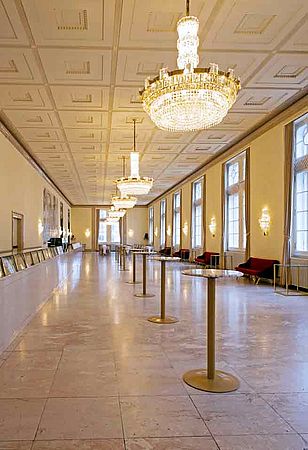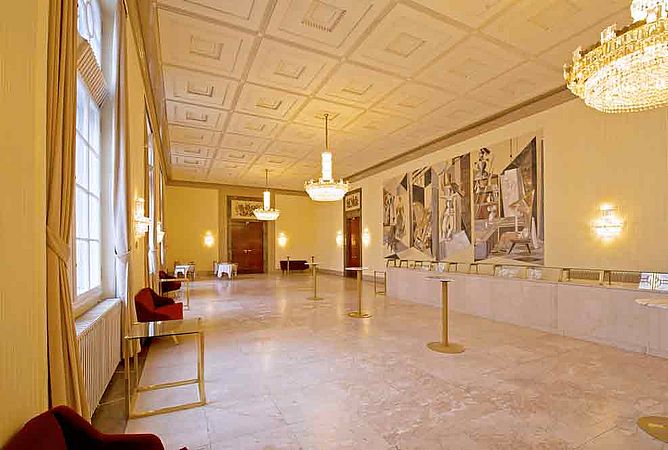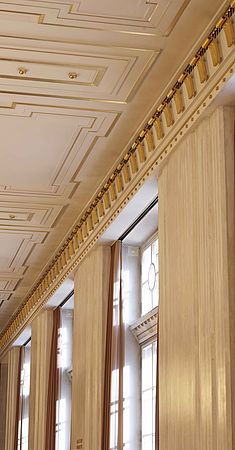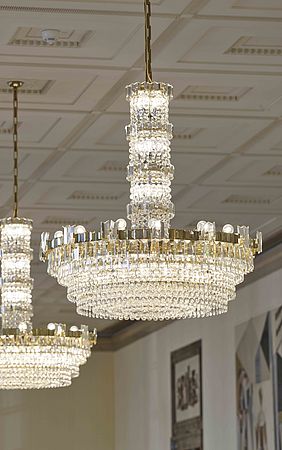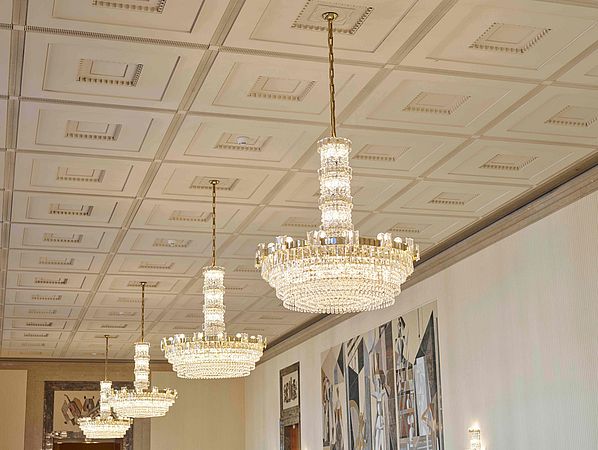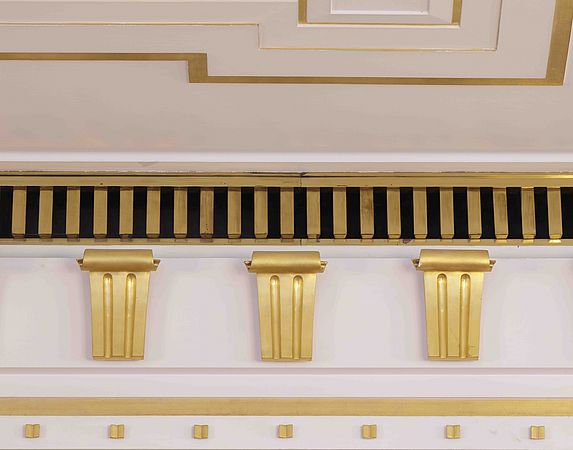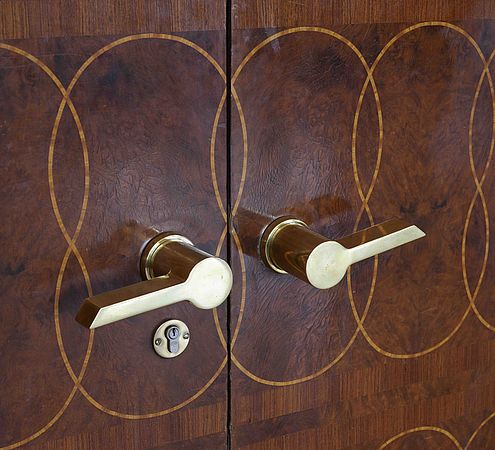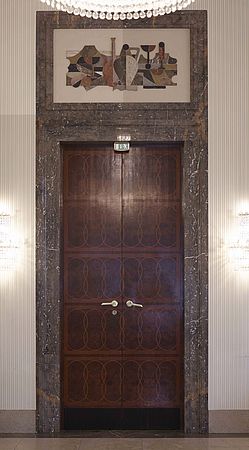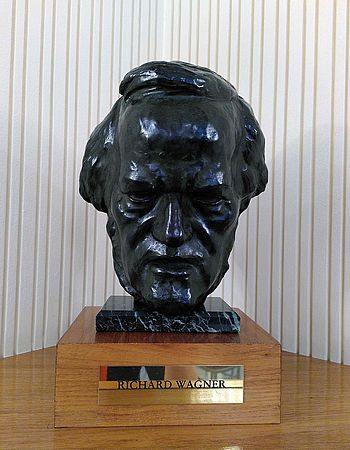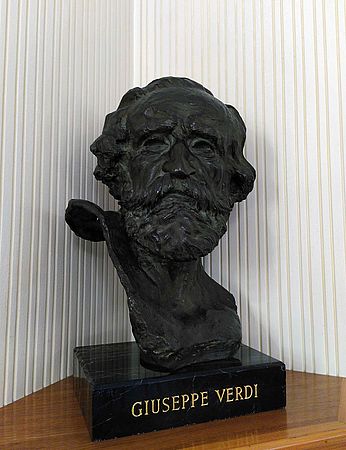Marble Hall
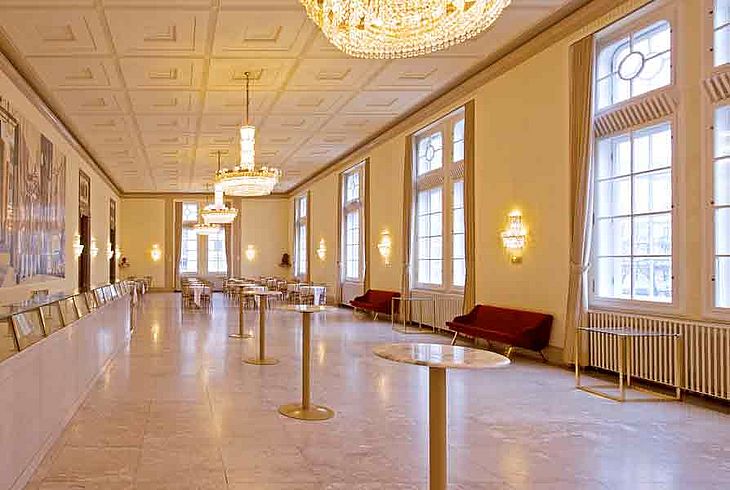
The marble hall, which is kept in an explicitly sober style, is one of the largest intermission halls at the Vienna State Opera and one of the parts of the building reconstructed in the 1950s. In terms of materials, different types of marble were combined in an almost programmatic way: for the mosaics, different kinds of marble from almost all European countries were used to reflect the wish for a united Europe. For the floor, the door frames and the large buffet table, various types of marble from Austria (Salzburg) were used for purely aesthetic reasons.
For the interior, the Austrian architect Otto Prossinger (1906-1987) was engaged, who brought together the path of a new, objectified architecture with the local building tradition. The Austrian sculptor and Wotruba assistant Heinz Leinfellner (1911-1974), who was influenced by the design principles of constructivism and cubism, was chosen to design the marble inlays. And the crystal chandeliers were contributed by the traditional Austrian Viennese manufacturer Bakalowits.
Originally, the site of today’s Marble Hall was occupied by the Emperor`s Hall (»Kaisersaal«), a magnificent neo-Renaissance hall that served as a reception salon for the high aristocracy, as well as an administrative service flat (of the »house inspector«), which was dissolved in the mid-1930s and transformed into a smoking salon. The coffered stucco ceiling that can be seen today is thus a reminiscence of the original Emperor`s Hall.
Three fresco paintings by Eduard von Engerth depicting Mozart’s Le nozze di Figaro have been preserved from the former Emperor`s Hall and were transferred to the elongated opera foyer (visitor centre) on the ground floor during the reconstruction.
